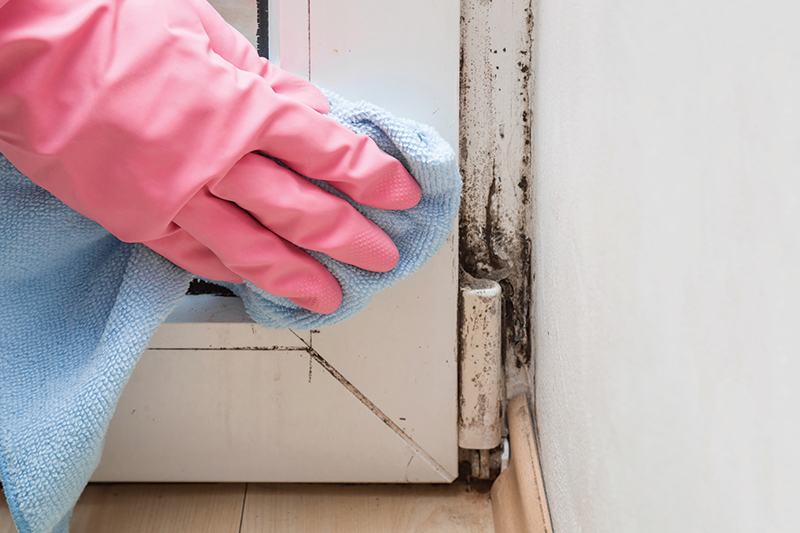Being exposed to mold could cause an array of devastating symptoms including headaches, fatigue, brain fog and joint pain. This phenomenon of mold sensitivity is sometimes referred to as CIRS or chronic inflammatory response syndrome. While for some people this can be the sole cause of chronic disease, it is extremely under-recognized in the medical community. Raising awareness for both patients and physicians can help solve this treatable medical mystery.
The mold sensitivity discussed in this article differs from a mold allergy. With an allergy, a person can get the typical symptoms of sneezing, runny nose and watery eyes. Having a sensitivity on the other hand means the body reaction is a widespread inflammation in response to exposure. This can cause long lasting effects, hence the term chronic inflammatory response syndrome.
Common Symptoms of Mold Sensitivity
There are a host of common symptoms typically experienced with CIRS including fatigue, brain fog, headaches and joint pain. Some people develop edema (swelling or water retention in arms or legs), rashes, unexplained anxiety, sleep difficulty, and a vibration or buzzing sensation throughout the body. These symptoms can be caused by even the smallest amount of mold exposure. They can happen intermittently if the exposure is inconsistent or can develop to chronic during regular exposure.
More often than not the source of exposure isn’t always obvious. This is especially the case when even minute amounts can cause a reaction. How do you know if mold is an issue?
Questions to Ask:
- Did symptoms start after being in a new location such as a new home or office?
- Are my symptoms worse during wet and rainy seasons?
- Do I feel worse in some buildings and better when I leave?
- Do I live with any of the following conditions: an old house, a house with signs of water damage, older carpeting, condensation on the windows or a musty smell?
All of these scenarios could indicate a mold exposure and shed light on the cause of your symptoms. While there are various swabs and cultures that can be used to test your home, they aren’t always sensitive enough to get a true picture. The most effective way to get a definitive answer is to have a certified inspector assess the location. If mold is found, it is best to have a professional do the remediation.
Stopping your exposure is crucial for recovery. You can think of this like a sinking boat, with a hole being your exposure and the water filling it up being your symptoms. You can try endlessly to get the water out but unless you plug the hole it’s going to be an ineffective battle. Once exposure is remedied, there are many additional options for people to help with their recovery.
Treatment for Mold Exposure
The first step in treatment includes the use of binding agents. Binders are substances that, once taken, serve to literally bind toxins (such as mycoxtins, or mold toxins) for elimination from the body. Among the most common natural agents to do this are activated charcoal and chlorella. I find activated charcoal to be more effective at eliminating mycotoxins. Since binding agents can interact and bind to more than just the toxins, care must be taken to prevent inappropriate binding of nutrients or medications. Speak with a knowledgeable provider for specific recommendations.
Another treatment that is extremely effective is the use of low dose immunotherapy or LDI. Clinically I find this to be the biggest game changer for a person’s recovery. While being exposed to mold is unhealthy in general, not everyone will become sick in response to it. There are many reasons not discussed here including genetic susceptibility that play a role in a person’s reaction. However, we know for those affected the reaction is caused by an inappropriate immune response. LDI works to correct this process, significantly reducing the inflammatory reaction. When we can get inflammation under control, many symptoms will be relieved. Additionally, LDI helps to create long-term retraining of the immune system, making a person more resilient to future exposures. Low dose immunotherapy is administered by taking a small amount of a homeopathic dilution orally until the desired effects are obtained. It is safe, effective, and can be used for all ages.
If the above scenarios of exposure and their corresponding symptoms sound familiar, speak with a knowledgeable physician and know that it is a treatable condition. Consider getting your physical environment tested. The use of air purifiers and dehumidifiers can be helpful and both are good starting points.
Dr. Tonya Pasternak has a family practice in Manchester, CT at Collaborative Natural Health Partners. All of the physicians at the clinic are in network providers for most insurance companies and are accepting new patients. For more information or questions, please call (860)533-0179 or visit: ctnaturalhealth.com.
